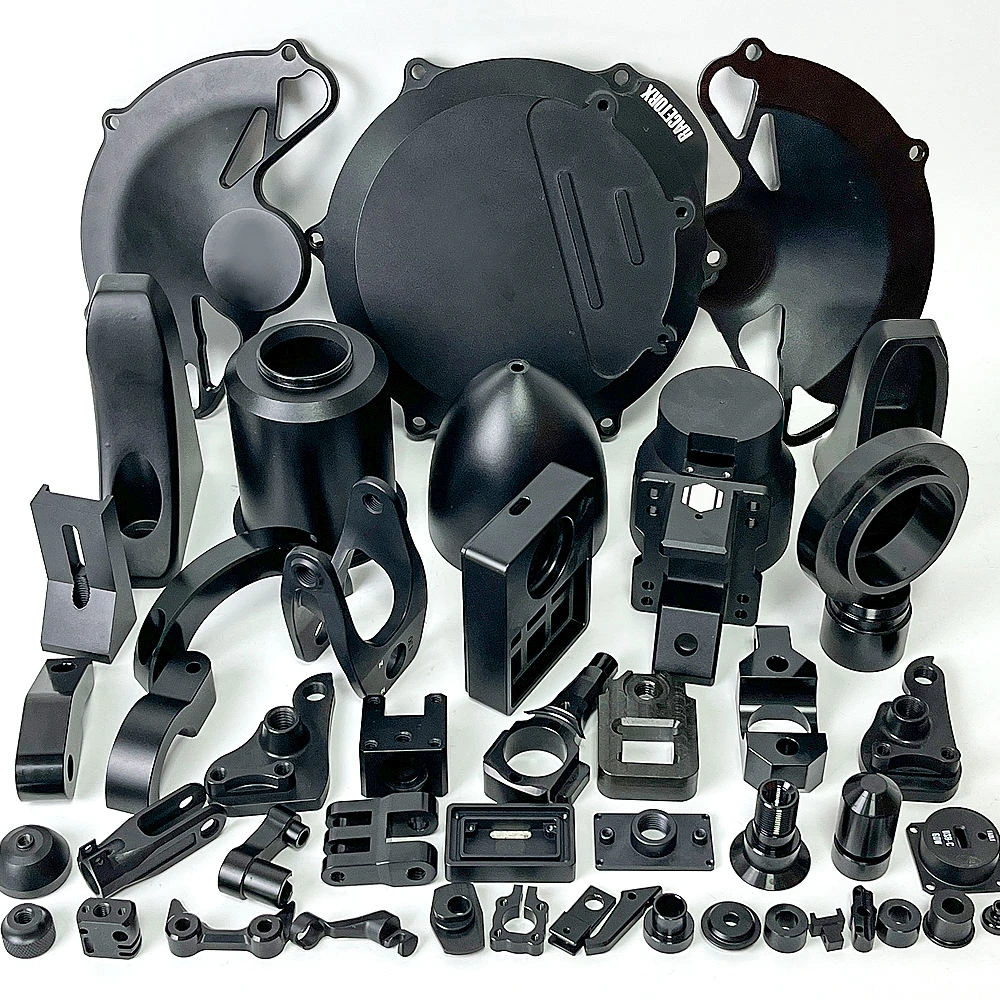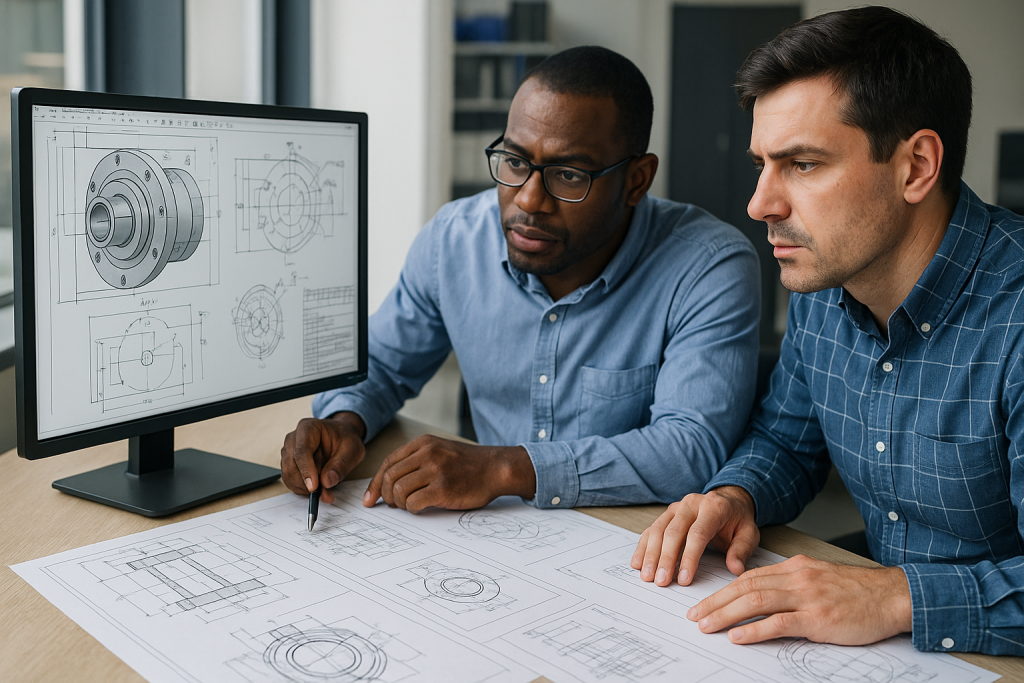
In 2025, manufacturers face growing pressure to balance rapid product development with sustainability goals. Prototyping—whether for automotive, aerospace, medical, or consumer products—has traditionally generated high material waste and energy consumption. Fortunately, new approaches such as on-demand CNC machining, additive manufacturing, and digital design optimization are cutting waste and delivering greener results.
This article explores how sustainable prototyping is reshaping production, with insights from Boona Prototypes, a global provider of CNC machining, 3D printing, injection molding, and rapid prototyping services.
I. The Hidden Costs of Traditional Prototyping
Traditional prototyping methods, particularly subtractive manufacturing like CNC milling, often discard 50–70% of raw material during cutting and shaping. Beyond scrap, manufacturers face:
-
High energy use for machining and rework
-
Multiple prototype iterations due to design flaws
-
Overproduction risks when minimum order quantities (MOQs) are required
-
Longer supply chains and excess packaging waste
These challenges highlight why sustainable prototyping is now a critical strategy in 2025.
II. Key Sustainable Prototyping Strategies
-
Design for Manufacturability (DfM)
Using CAD simulations and digital twin technology reduces physical prototypes needed. -
Material Efficiency
Choosing recyclable plastics or lightweight metals reduces environmental impact. -
Additive Manufacturing (3D Printing)
Processes like SLA, SLS, and DMLS build parts layer by layer, minimizing waste compared to CNC machining.
See Boona Prototypes 3D Printing Services for available technologies. -
Low-Volume & On-Demand Production
Companies like Boona Prototypes offer no MOQ, reducing risks of overproduction.
III. BOONA Role in Sustainable Prototyping
Boona Prototypes integrates sustainability into prototyping through:
-
Wide material selection – from plastics (ABS, Nylon, PEEK) to metals (aluminum, titanium, stainless steel).
-
Precision machining – tight tolerances reduce defective parts and rework.
-
Hybrid processes – combining CNC machining and 3D printing for waste reduction.
-
On-demand model – eliminating unnecessary inventory and excess production.
Example: CNC Machining Capabilities
| Parameter | Value/Range | Source |
|---|---|---|
| Tolerance | ±0.005 mm to ±0.02 mm | CNC Machining |
| Max part size | 1200 x 800 x 500 mm | CNC Milling |
| Supported metals | Aluminum, Titanium, Stainless Steel, Brass | CNC Turning |
| Supported plastics | ABS, Nylon, POM, PEEK | Rapid Prototyping |
| Lead time | 3–7 days (standard) | Boona Services |
Example: 3D Printing Capabilities
| Process | Materials Supported | Layer Thickness | Application |
|---|---|---|---|
| SLA | ABS-like resin, clear resin | 0.05–0.15 mm | Prototypes, models |
| SLS | Nylon PA12, glass-filled nylon | 0.08–0.20 mm | Functional parts |
| DMLS | Stainless steel, aluminum, titanium | 0.02–0.05 mm | Aerospace, medical |
| MJF | Nylon PA12, PA11 | 0.07–0.12 mm | Low-volume production |
Source: Boona Prototypes 3D Printing.
IV. Measuring Sustainability in Prototyping
Companies can evaluate sustainability progress with:
-
Material scrap ratio (waste vs. final part)
-
Number of iterations saved with DfM and simulation
-
Energy usage per part
-
Lead time reduction compared to traditional prototyping
V. Future Outlook: 2025 and Beyond
By 2025 and beyond, manufacturers will integrate AI-driven generative design, recycled materials, and digital twin simulations to further cut waste. Companies that embrace sustainable prototyping early gain both environmental credibility and competitive cost advantages.
Conclusion
Sustainable prototyping is no longer optional—it is the future of product development. By combining digital design optimization, additive manufacturing, and on-demand CNC machining, manufacturers can cut waste by up to 50% while accelerating time to market.
Boona Prototypes stands out as a partner for companies seeking eco-friendly, high-precision, and low-volume manufacturing solutions in 2025.
FAQs
Q1: What is sustainable prototyping?
A: Sustainable prototyping is the process of creating product prototypes using eco-friendly materials, efficient manufacturing methods, and waste-reduction strategies. Instead of overproducing or generating excess scrap, companies use technologies like CNC machining (see Boona CNC services) and 3D printing (Boona 3D printing services) to minimize environmental impact.
Q2: How does 3D printing reduce waste compared to CNC machining?
A: CNC machining is a subtractive process, which cuts away raw material and often results in 50–70% waste. In contrast, 3D printing is additive, building parts layer by layer using only the required material. Companies like Boona Prototypes offer SLA, SLS, DMLS, and MJF printing technologies that cut material waste by up to 50%.
Q3: Can sustainable prototyping save costs for manufacturers?
A: Yes. While some eco-friendly materials may have a higher upfront cost, the savings from reduced scrap, fewer iterations, and faster turnaround often outweigh initial expenses. For example, Boona rapid prototyping services allow clients to order low-volume production with no MOQ, avoiding overproduction costs.
Q4: What materials are used in sustainable prototyping?
A: Sustainable prototyping leverages both recyclable plastics and lightweight metals. Common options include ABS, Nylon, POM, and PEEK plastics, as well as aluminum, stainless steel, and titanium. Boona Prototypes provides a broad material library for CNC machining, 3D printing, and molding.
Q5: How does on-demand manufacturing help reduce waste?
A: On-demand manufacturing eliminates the need for bulk production and warehousing. Instead, parts are produced only when needed. Boona Prototypes specializes in on-demand CNC machining and 3D printing, helping businesses cut inventory waste and lower their carbon footprint.
Q6: What role does design for manufacturability (DfM) play in sustainability?
A: DfM ensures products are designed to be manufactured efficiently from the start, reducing rework and discarded prototypes. By combining DfM with simulation tools, companies can validate designs before fabrication. Many clients rely on Boona rapid prototyping expertise to integrate DfM principles into their projects.
Q7: Is sustainable prototyping suitable for large-scale production?
A: Yes, but with certain strategies. While prototyping itself is usually low-volume, the same sustainable practices—like material-efficient design, additive manufacturing, and on-demand production—can be scaled up to mass production. Boona injection molding services are often used for low-volume trials before moving to full-scale production.
Q8: What industries benefit the most from sustainable prototyping?
A: Aerospace, automotive, medical devices, consumer electronics, and robotics are leading industries adopting sustainable prototyping. These sectors benefit from lighter parts, reduced material waste, and faster product development cycles using Boona CNC and 3D printing services.



